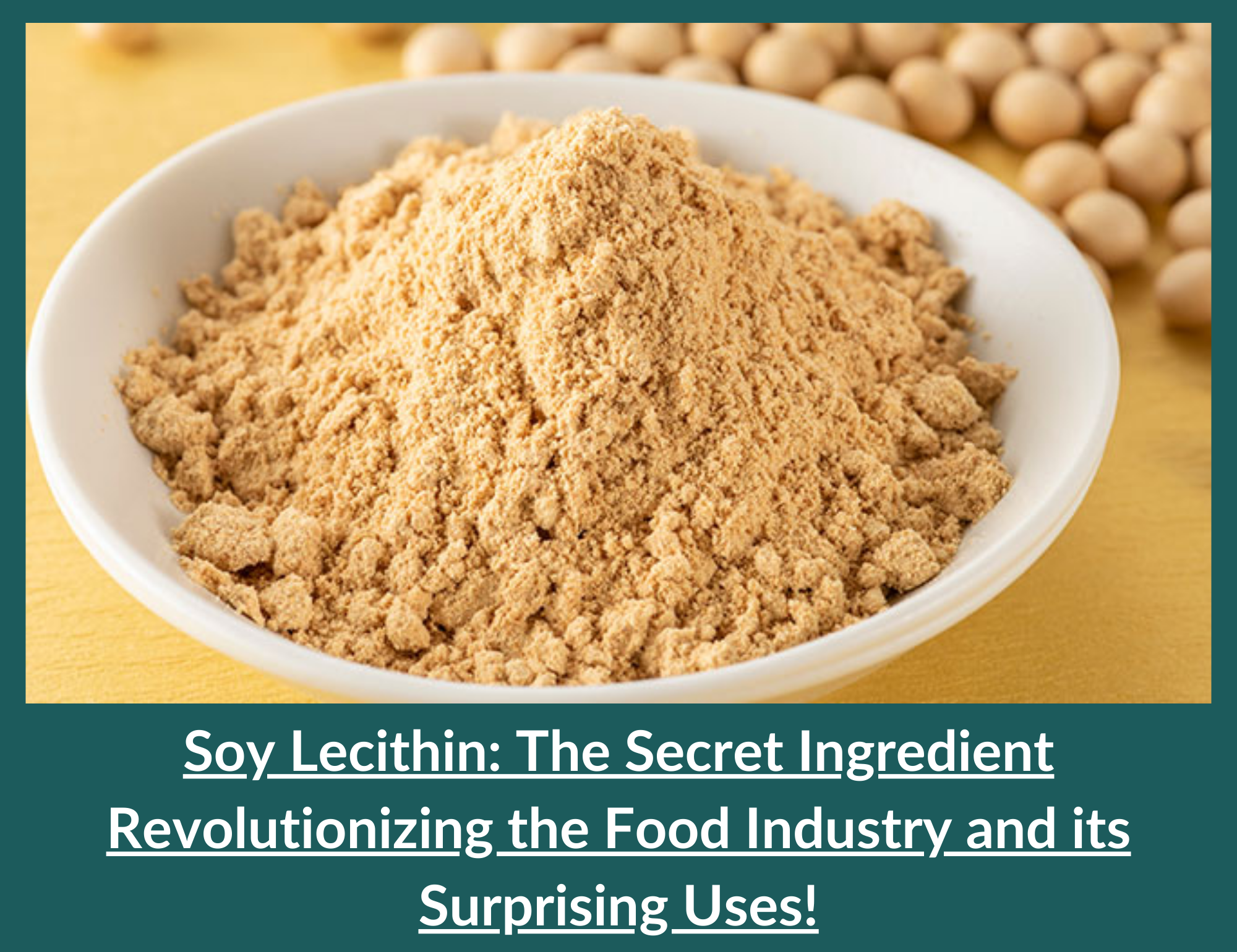Soy lecithin is a commonly used food ingredient in the food industry for many years. It is derived from soybeans, a mixture of various phospholipids, including phosphatidylcholine, phosphatidylinositol, and phosphatidylethanolamine.
It is a versatile ingredient used in various food products, including chocolate, baked goods, margarine, and dressings. In this article, we will explore soy lecithin and how it is used in the food industry.
The Production Process of Soy Lecithin

It is produced by extracting the oil from soybeans and separating it from the protein and fiber. The crude soy oil is then de-gummed to remove impurities. The resulting crude soy lecithin is purified by centrifugation, filtration, and solvent extraction.
The final product is a yellowish-brown liquid or solid that contains a mixture of various phospholipids.
Emulsifying Properties
One of the main functions in the food industry is its ability to emulsify normally unmixable liquids, such as oil and water. It acts as a stabiliser, preventing the separation of the two liquids.
This property is particularly useful in the production of chocolate, where it is added to the mixture to keep the cocoa butter and cocoa solids from separating. It is also used in salad dressings and mayonnaise to prevent the oil and vinegar from separating.
Baking Applications
Soy lecithin is also used in baked goods to improve their texture and shelf life.
In cakes, it acts as a crumb softener, producing a moist and tender crumb. It also helps to extend the shelf life of baked goods by preventing them from becoming stale. In bread, it improves the dough’s elasticity, making it easier to work with and resulting in a more consistent texture.
Other Applications
It is also used to produce margarine and other spreads, acting as a stabiliser and preventing the spread from separating. It is also used to produce infant formula to improve the mixability of the powder with water.
Safety Considerations
Soy lecithin is generally recognized as safe (GRAS) by the U.S. Food and Drug Administration (FDA). It is approved for use in food products. However, some people may be allergic to soy, and they should avoid consuming soy lecithin products.
Additionally, some people are concerned about the use of genetically modified soybeans in producing soy lecithin. However, the FDA has stated that genetically modified soy lecithin is safe for consumption.
Soy lecithin is a widely used food ingredient that is derived from soybeans. It is used in various food products, including chocolate, baked goods, margarine, and infant formula. Soy lecithin has emulsifying properties that make it useful in preventing the separation of liquids. It also improves the texture and shelf life of baked goods.
The FDA generally recognizes soy lecithin as safe, but individuals with soy allergies should avoid consuming it.
Don’t let ingredient sourcing slow you down! Experience hassle-free procurement with EasyBuy. Click now to purchase Soy Lecithin and other essential ingredients at exceptional prices. Start simplifying your supply chain today!
Citations
- FDA. (2021). CFR – Code of Federal Regulations Title 21. Retrieved fromhttps://www.accessdata.fda.gov/scripts/cdrh/cfdocs/cfcfr/
- Gaweł, E., Barczak, M., & Kaleta, A. (2014). Soy lecithin as an emulsifier in the food industry. Part I. Acta Scientiarum Polonorum Technologia Alimentaria, 13(2), 209-219.
- Gaweł, E., Barczak, M., & Kaleta, A. (2014). Soy lecithin as an emulsifier in the food industry. Part II. Acta Scientiarum Polonorum Technologia Alimentaria, 13(2), 221-231.
- Kinsella, J. E. (1988). Functional properties of soybean lecithin. Journal of the American Oil Chemists’ Society, 65(2), 228-241.
- Krogdahl, Å., Bakke-McKellep, A. M., & Baeverfjord, G. (2003). Effects of soybean meal on the intestine of Atlantic salmon (Salmo salar): Possible implications for future use of alternative protein sources. Aquaculture, 217(1-4), 351-362.








